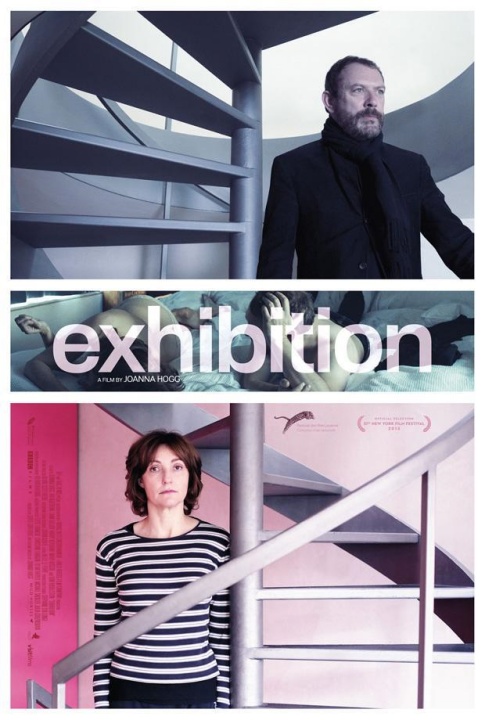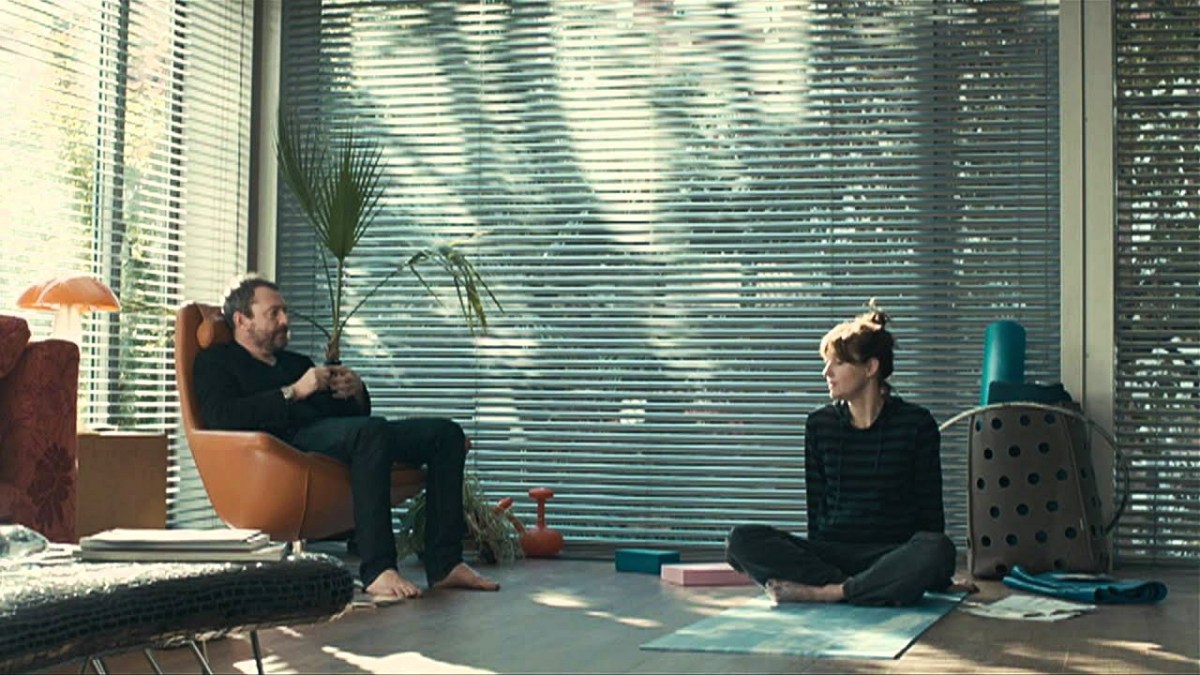Architecture meets cinema in this minimalist if keenly observed, hauntological tale of two intimacy-starved artists living in a glass house in London as they prepare for its sale.

Review #2,383
Dir. Joanna Hogg
2013 | UK | Drama | 105 mins | 1.85:1 | English
Not rated – likely to be R21 for sexual scenes
Cast: Viv Albertine, Liam Gillick, Tom Hiddleston
Plot: When couple D and H, both artists, decide to sell the home they have loved and lived in for two decades, they begin a process of saying goodbye to their shared history under the same roof. The upheaval causes anxieties, memories, fears and dreams to surface.
Awards: Nom. for Golden Leopard (Locarno)
International Sales: Visit Films
Accessibility Index
Subject Matter: Moderate – Marriage; Intimacy; Art
Narrative Style: Straightforward
Pace: Slow
Audience Type: General Arthouse
Viewed: MUBI
Spoilers: No
I enjoyed this from Joanna Hogg so much more than The Souvenir (2019), though Exhibition did take a while to get me on its wavelength. When it did, it became a trance-like experience seeing Hogg working her delicate magic.
Here, we follow D and H, two artists living in a glass house in London as a married couple for nearly two decades. However, they are preparing for its sale (early Hogg regular Tom Hiddleston makes a cameo as a property agent!) and are finding it difficult to come to terms with parting with their dear space.
If only they feel the same intense way about each other… being intimacy-starved for years, D and H might appear to be comfortable with each other’s company and share similar dispositions toward art as work, yet they struggle to show love and affection, let alone sexual desire for one another.
“We’ve got possibilities, you know? We should do it while we can.”
As much as Hogg’s film is a study of a stagnant marriage between two creative intellectuals, it is also a hauntological tale about returning ghosts, be it past inhabitants whose spirits, as a character remarks, have already been absorbed into the walls of the house, or future occupants who must contend with accumulative spectres.
Hogg uses the house’s architectural construct—the minimalist furniture, reflective glass windows, sliding doors, the thin walls and ceilings where footsteps permeate readily, and the utter quietude of its interiors—to create a bubble of existence. This bubble is occasionally broken through the strategic use of sounds from the street, be it police sirens or construction.
The result is a film that is a mix of slow cinema and the avant-garde, yet it has a modern, elegant sensibility that suggests that it is also an uncommon treatment of contemporary ennui as experienced by the bourgeois.
Grade: B+
Trailer:
Music:











